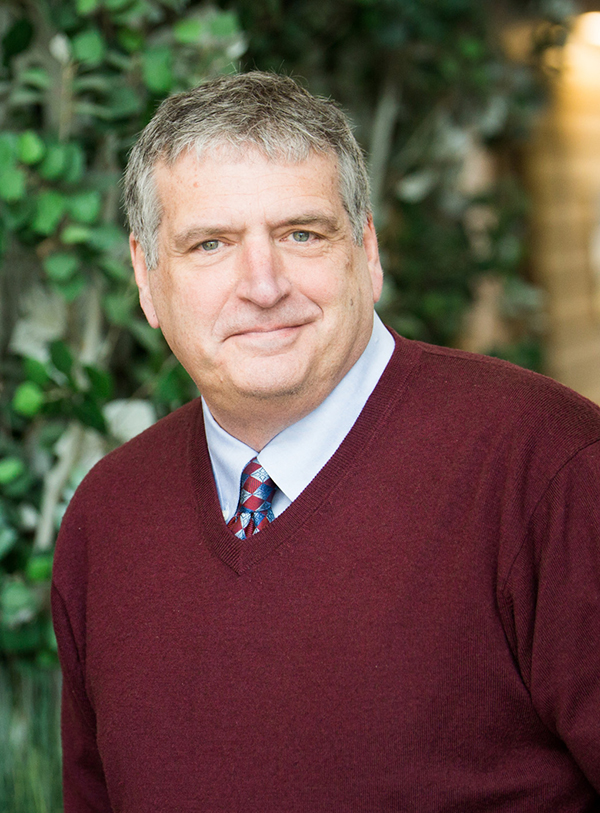In Memoriam: R. William (Bill) Field
1954-2022
by Dan Steck

R. William (Bill) Field, 68, died 4 November 2022 from refractory mantle cell lymphoma.
Bill was an exceptional researcher, teacher, mentor, and public health leader. He and I shared friendship and the passionate pursuit of radon for 30 years. We met at the 1991 International Radon Symposium. Bill was studying residential radon exposure for his PhD and was involved in planning a radon lung cancer study. Retrospective case-control studies need good estimates of individuals' radon exposures over past decades. Bill wanted to learn about the new technique of retrospective radon dosimetry using radon decay products implanted in surfaces. In 1993, Bill was asked to coordinate the Iowa Radon Lung Cancer Study. During the next five years, he helped guide that study with his steady and collegial leadership. In 2000, Bill was the lead author of the main paper on the Iowa Radon Lung Cancer Study.[1] Subsequently, he worked on improving radon epidemiology including contributions to the North American and the world combined analyses. Bill, his students, and I pursued improvements in radon exposure dosimetry until his death (see Press Citizen obituary).
Bill joined the faculty of University of Iowa College of Public Health in 1998. He welcomed and mentored students from across the world. In 2005, he established the Occupational Epidemiology Training Program. When several of his PhD students worked with me, I saw firsthand that Bill was a patient and supportive teacher who cared deeply about the success of his students. Bill also mentored international scientists who were developing their own radon research programs.
Bill became a leading international expert on radon. He was the go-to-guy for radon-related public health information. An active advocate for radon exposure reduction, he gave many public presentations and produced print and video media for public educational outreach. His efforts were recognized by many awards from organizations including the US Environmental Protection Agency (EPA) in 2005 and the Conference of Radiation Control Program Directors, who named him their Radon Hero in 2022.
Bill started his radiation-related health research in 1981 when he studied radioactive iodine uptake in voles near Three Mile Island. In recent years, Bill continued to investigate radon-related health effects along with the effects of exposure to other radiation sources and toxins. He served on numerous radiation-related scientific boards and committees. He was a member of CDC/NIOSH Presidential Advisory Board on Radiation and Worker Health, the US EPA Science Advisory Board, National Academy of Sciences, and National Council of Radiation Protection and Measurements. A Health Physics Society (HPS) member since 1982, Bill was a member of the HPS Environmental/Radon Section.

Bill moderating a radon workgroup discussion in 2007, left to right, J. Miles (UK), T. Kovacs (Hungary), W. Angell (US), B. Field (US), J. Jankowski (Poland), D. Steck (US), H. Arvela (Finland)
Photo courtesy of Dan Steck
Bill was invited to help organize the US scientific contribution to the World Health Organization's radon handbook project. The handbook content was developed by six topical workgroups. Bill was a member of four workgroups. He accepted the task of organizing two: the radon measurements and the mitigation-prevention workgroups. Bill invited leading experts from many countries for those workgroups. He recruited William Angell to chair the mitigation workgroup. He invited Phil Jenkins and me to assist in writing the measurements chapter along with our international colleagues. I am grateful to Bill for inviting me as it was among the most rewarding work in my career. The picture on the left shows Bill (light blue shirt) moderating a radon workgroup discussion in 2007. In 2009 the WHO Handbook on Indoor Radon was published with Bill as a coeditor.
After his retirement, Bill joined colleagues at Columbia to investigate non-lung cancer radon-related health effects. We exchanged emails about resurrecting the retrospective radon detectors for those studies into the fall of 2022. His last email asked me to find someone who could use his radon equipment to carry on. I wish I had recognized the wisdom embedded in that familiar subject line of his: "tempus fugit." Amen old friend.
[1]Field RW, Steck DJ, Smith BJ, Brus CP, Fisher EL, Neuberger JS, Platz CE, Robinson RA, Woolson RF, Lynch CF. Residential radon gas exposure and lung cancer: the Iowa Radon Lung Cancer Study. Am J Epidemiol 151(11):1091-102; 2000. DOI: 10.1093/oxfordjournals.aje.a010153.




